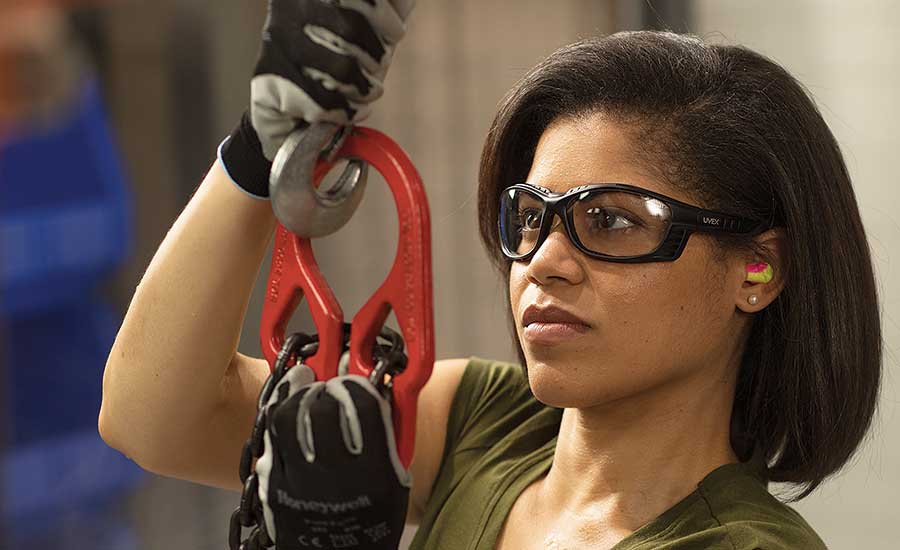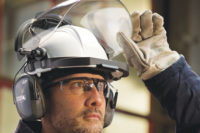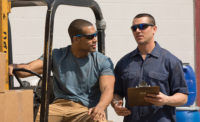Outfitting Millennials: Eye protection must have comfort & style

More than one in three U.S. workers are now Millennials, having surpassed Baby Boomers and Gen Xers as the largest generation in the U.S. labor force. Born between 1980 and 2000, they are also the first truly digital generation. Having grown up with the power of the web at their fingertips, Millennials are tech-savvy consumers; they’re instantly informed and they’re more educated than any previous generation.1
Because Millennials came of age during a time of rapid technological change, globalization, and economic disruption, their perspectives and behaviors differ greatly from those of previous generations.2 The unique experiences of this young, diverse and powerful population are reshaping the economy and the workforce alike.
Outfitting Millennials with personal protective equipment requires a fresh approach. This article provides tips for selecting safety eyewear that this newly dominant group will accept – and even want to wear. By doing so, workers and employers alike will be better protected from the costs and lasting effects associated with occupational eye injuries.
Raise risk awareness
Millennials are an informed population. They rely on handheld devices for instant answers, fast facts, product research, and price comparisons. They’re also the most educated: more than one-third of the nation’s adult population has a bachelor’s degree or higher for the first time.3 Rather than assume Millennials will not wear eye protection just because you’ve provided it; you’ll need to convince them why they should wear it.
Eye injuries are more common than you – or a Millennial – might think. More than 2,000 workers suffer eye injuries daily in the U.S.4 Effects range from temporary irritation or blindness to the permanent loss of vision or of the eye itself. The cost of losing one’s sight is immeasurable
The good news is, most experts agree that up to 90 percent of eye injuries can be prevented through the proper use of safety eyewear.5 To help reduce or avoid workplace eye injuries, safety managers should:
- Provide the appropriate type of eye protection for all hazards present
- Provide eyewear that delivers a secure, gap-free fit
- Ensure workers wear safety eyewear everywhere hazards exist
- Inform workers of key findings from hazard assessments
- Ensure all occupational safety eyewear meets the American National Standards Institute’s ANSI Z87.1 standard for impact protection
- Consider specialized eyewear if your site features high-impact hazards, chemicals, extreme heat or wind, or harmful light
Don’t overlook risks posed by fogging
While keeping objects and other hazards out of workers’ eyes is vital, so too is providing lenses that deliver a consistently clear, safe view. Safety lenses that fog undermine safety, productivity and compliance.
Fogging is the number one problem faced by safety eyewear users. Caused by environmental factors as well as worker exertion, fogging is nearly impossible to avoid. When tasks are conducted with fog-obscured vision, workers risk not only eye injury but also bodily harm. It takes seconds or less for a potentially catastrophic event to occur.
Maintaining a fog-free, scratch-free view is vital. Look for advanced anti-fog and anti-scratch lens coatings that deliver the longest lasting and most consistent, proven performance. Anti-fog coatings that are permanently bonded to the lens and employ dual-action properties – hydrophilic to absorb moisture and hydrophobic to repel it – will deliver the most reliable and consistent long-term performance.
It has to look and feel good
While protection is safety eyewear’s primary attribute, attractive styling and a comfortable fit directly support compliance. Remember, 90 percent of eye injuries are avoidable. Half the battle (or arguably more) is simply getting workers to put on their safety eyewear — and keep it on.
Millennials who don’t feel comfortable with the look or feel of their eyewear are more likely to remove it. But leaving safety eyewear selection in their hands isn’t your best alternative: without proper guidance workers are likely to make their selection based on style over safety or fit, which can lead to inadequate protection.
To encourage all-day wear, look for safety eyewear fashioned after popular sport-inspired or recreational sunwear designs. Opt for advanced materials on the nosepiece and temples for a secure, no-slip grip, and innovative adjustability features for comfortable, gap-free protection across an increasingly diverse workforce.
It pays to protect workers’ eyes
Savvy consumers, Millennials actively seek out the best value for their money. But skimping when it comes to eye protection isn’t your best bet – most people agree that their eyes are their most valuable asset.
While there’s no shortage of inexpensive safety eyewear on the market, beware of options that leave workers at risk. Inferior models are not likely to:
- meet ANSI standards;
- deliver full-spectrum UV protection or specialized lens tints;
- ensure distortion-free optics;
- prolong a safe view with effective anti-fog/anti-scratch coatings; or
- deliver a safe, snug fit and all-day comfort across a diverse workforce.
When eyewear fails, injuries occur – and expenses mount. The cost of workplace eye injuries exceeds $467 million annually in direct costs; more than $930 million when indirect costs are factored in.6 When it comes to eye safety, paying for the value of preventative measures can save an employer from these substantial, unplanned and often preventable costs. In fact, statistics from injury reports filed with OSHA show that companies with safety and health management systems can expect reductions in injury and illness costs by 20 to 40 percent7 and see a return of $4 to $6 for every $1 invested.8
Across generations, most people agree that vision is among their most valuable assets. Selecting the proper type of eyewear to protect from physical hazards is vital, but when selecting eyewear for Millennials many other factors should be taken into account. From informing your workforce of eye hazards to selecting styles with advanced lens coatings and exceptional comfort and fit features, you will deliver exceptional safety and value in every pair of eyewear.
Sources
1. U.S. Census Bureau, “Highest Educational Levels Reached by Adults in the U.S. Since 1940,” https://www.census.gov/newsroom/press-releases/2017/cb17-51.html?intcmp=s1_2016educattain
2. Goldman Sachs, “Millennials Coming of Age,” http://www.goldmansachs.com/our-thinking/pages/millennials
3. U.S. Census Bureau, “Highest Educational Levels Reached by Adults in the U.S. Since 1940,” https://www.census.gov/newsroom/press-releases/2017/cb17-51.html?intcmp=s1_2016educattain
4. National Institute for Occupational Safety and Health (NIOSH), “Eye Safety,” https://www.cdc.gov/niosh/topics/eye/
5 - Prevent Blindness, “10 Ways to Prevent Occupational Eye Injuries,” http://www.preventblindness.org/sites/default/files/national/documents/fact_sheets/MK33_OccupEyeInjuries.pdf
6. Prevent Blindness, “10 Ways to Prevent Occupational Eye Injuries,” http://www.preventblindness.org/sites/default/files/national/documents/fact_sheets/MK33_OccupEyeInjuries.pdf
7. U.S. Department of Labor, “Safety and Health Add Value to Your Business,” https://www.osha.gov/Publications/safety-health-addvalue.html
8. U.S. Department of Labor, Occupational Safety and Health Administration, https://www.osha.gov/pls/oshaweb/owadisp.show_document?p_table=SPEECHES&p_id=930
Looking for a reprint of this article?
From high-res PDFs to custom plaques, order your copy today!





